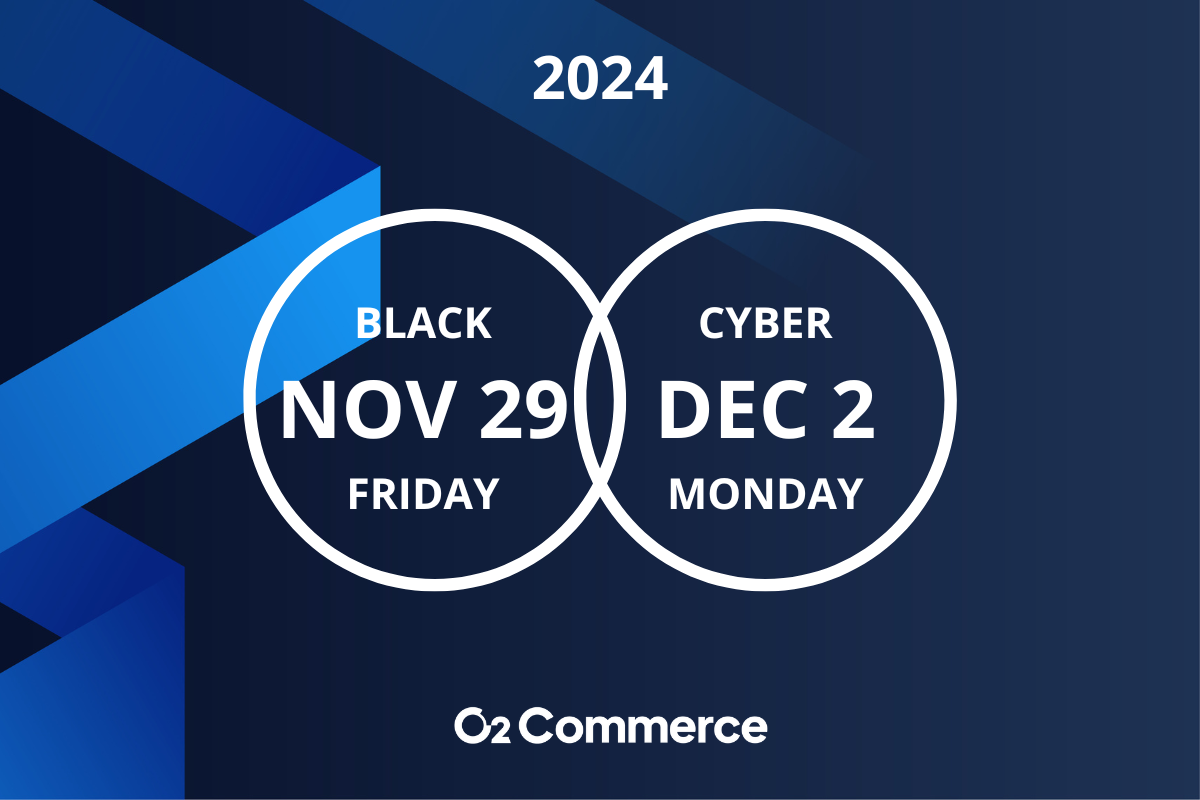
5 Strategic Evolutions Redefining Black Friday and Cyber Monday
During the 2023 Black Friday and Cyber Monday in the United States, online sales reached record highs! Black Friday generated $9.8 billion in online sales, a 7.5% increase from the previous year. Cyber Monday surpassed that with $12.4 billion, reflecting a 9.6% year-over-year growth.
These iconic sales events are no longer just opportunities to buy discounted goods in bulk; they are becoming true indicators of the digital commerce landscape and key moments for evaluating global e-commerce strategies. And this trend isn’t going away. According to experts, by 2025, more than half of consumers will expect deals throughout the year, disrupting traditional sales models.
So, how are e-commerce leaders adapting to this new landscape? Here are five strategic evolutions transforming how businesses approach Black Friday and Cyber Monday—days that now play a crucial role in the entire business year.
1. From Campaign to E-Commerce Ecosystem
Then: Planning for Black Friday.
Now: Building a year-long commercial ecosystem.
It’s no longer enough to prepare solely for Black Friday and Cyber Monday promotions. Visionary businesses are integrating these events into a continuous and holistic e-commerce ecosystem. The goal is to extend customer engagement beyond these peak days to maximize sales year-round.
Actionable step: Instead of launching short-lived ad campaigns, incorporate these events into an ongoing commercial strategy. Use platforms like Shopify to create a unified commerce ecosystem that integrates all sales channels: online, in-store, marketplaces, etc. For instance, synchronize your inventory and offer a seamless customer experience at all times.
2. From Data Collection to Artificial Intelligence
Then: Gathering customer data.
Now: Leveraging predictive models for strategic decisions.
Simply collecting data is no longer enough to stand out. Leaders are adopting artificial intelligence (AI) solutions to analyze data and predict purchasing behavior, allowing for informed decisions long before the customer adds an item to their cart.
Actionable step: Adopt solutions like Bloomreach and its AI-powered Loomi to analyze trends and forecast demand. Combine this with a Customer Data Platform (CDP) that centralizes customer data for more refined personalization.
3. From Omnichannel to Unified Commerce
Then: Expanding sales channels.
Now: Delivering a seamless and cohesive brand experience.
Today’s consumers expect a frictionless experience, whether they shop online, in-store, or through a mobile app. Unified commerce allows businesses to centralize all these experiences, creating continuity that drives customer loyalty.
Actionable step: Leverage platforms like Shopify to unify your online and physical sales channels. For a composable approach, commercetools enables you to build a customized architecture by integrating the best solutions on the market. With Akeneo‘s Product Information Management (PIM) combined with generative AI, you can enhance and automate product categorization, ensuring consistent product information across all channels.
4. From Customer Service to Experience Engineering
Then: Efficiently solving customer issues.
Now: Anticipating customer needs and delivering memorable experiences.
Forward-thinking businesses no longer merely respond to customer requests; they anticipate needs through data, creating richer, more personalized experiences that boost loyalty and satisfaction.
Actionable step: Leverage data from your CDP, such as Bloomreach, to gain deeper insights into customer behavior. Use these insights to design personalized experiences that anticipate customer needs. Integrate AI solutions like Loomi for instant and predictive customer support, improving satisfaction and loyalty.
5. From Marketing ROI to Ecosystem Value Creation
Then: Measuring the performance of individual campaigns.
Now: Assessing the overall impact on the company’s ecosystem.
It’s no longer enough to gauge the success of an ad campaign based on immediate ROI. Companies must now understand the broader impact of their marketing efforts on the entire business ecosystem.
Actionable step: Shift from basic campaign KPIs to evaluating overall impact with tools like Google Analytics 4 or Adobe Analytics. Integrate data from CDP, CRM, e-commerce, and more to gain a unified view of your marketing and business performance. Use advanced attribution models to understand the effect of every touchpoint and align your KPIs with the company’s overall strategy using platforms like Looker Studio. Incorporate Klaviyo into your email marketing strategy by automating campaigns and segmenting your audience for more relevant, personalized messages, contributing to a deeper understanding of customer engagement across the ecosystem.
By embracing these five strategic evolutions, businesses aren’t just surviving during Black Friday; they are redefining the rules of the game. So, are you ready to rethink your Black Friday strategy and beyond? The time to act is now!
By Delphine Potigny, Senior CRM Strategist
Senior CRM Strategist at O2 Commerce, Delphine has over 10 years of experience in digital marketing. A specialist in customer acquisition and retention strategies (CRM), she has led ambitious projects internationally, particularly in France, Canada, and Spain. Curious, ambitious, and persevering, she brings dynamism and expertise to every project.



